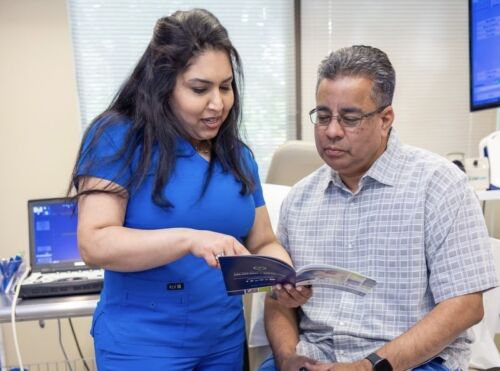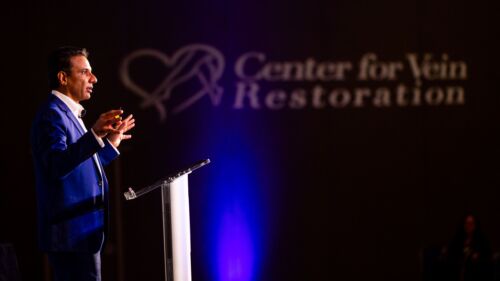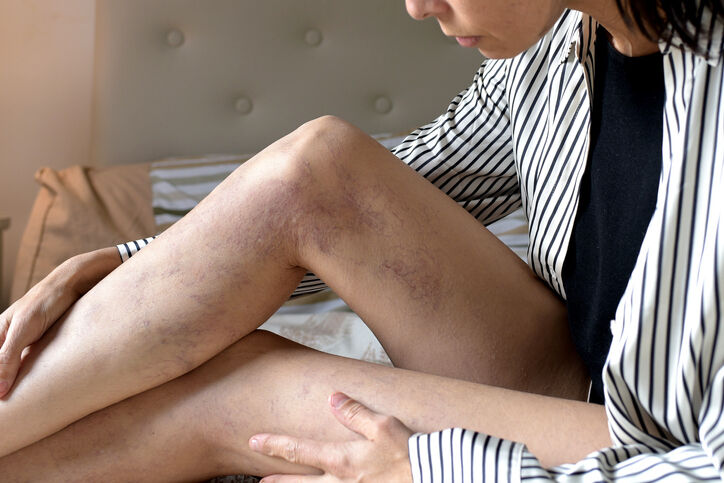Leg sores are a severe complication of venous insufficiency. The good news is that if caught early, your vein doctor can treat it successfully.
Chronic venous insufficiency (CVI) is more common than you might think. One study estimates 25 million adults in the U.S. have varicose veins, with another 6 million suffering from advanced stages of vein disease.
When venous insufficiency goes untreated, severe complications can result, such as a sore on the leg. According to one study, about 90 percent of all leg sores, also known as venous ulcers, result from chronic venous insufficiency. If you have sores on your legs, you’re likely experiencing CVI. Fortunately, vein disease is a treatable condition, but it’s up to you to seek appropriate treatment.
What causes sores on the legs?
The sores develop when tiny valves in the leg veins weaken, causing blood to pool within the vein walls. Pressure builds within the vein, causing several physical symptoms, including varicose veins, swelling, pain, and cramping.
The intense swelling and venous hypertension within the veins can also affect the skin. In fact, one of the early signs of a developing venous ulcer is discolored skin. As the pressure and swelling increase in the veins, the skin breaks into a sore. Typically, a cut or bruise mends quickly as blood rushes to the site. But because CVI blocks nutrient-rich blood from reaching the damaged skin, a venous ulcer takes much longer to heal.
Venous ulcers typically appear on the ankle as a shallow, red-colored sore covered by a layer of yellow tissue. The sore may ooze pus and emit a foul odor. The skin around the wound may also appear shiny and feel tight. As soon as you notice a leg sore developing, consult a board-certified vascular specialist, such as one at Center for Vein Restoration (CVR), who can treat your venous ulcers.
Treating leg sores caused by vein disease
Treating an active leg sore begins by healing the ulcer. Daily wound cleaning and dressing of the sore will keep it dry and reduce the chance that the wound will spread to surrounding tissue. You may also need a topical or oral antibiotic to prevent an infection. Removing dead skin, a process known as debridement, also promotes healing.
Improving circulation in the leg veins also speeds healing. Your doctor may recommend wearing compression stockings to promote blood flow. Elevating your legs for 30 minutes a day can also help drain the blood upward to the heart, thereby reducing swelling.
Note that those who have had one venous ulcer stand a greater chance of another. As such, prevention is critical to avoiding a second leg sore. Some preventative measures you can take include:
Exercising. There’s no better way to improve circulation than by working out. A brisk walk for 30 minutes daily strengthens the calf muscles that support the leg vein’s blood-pumping action. Swimming and biking are two other exercises that are good for circulation.
Losing weight. Your leg veins are affected by your weight. If you’re carrying extra pounds, you’re adding pressure to your veins, especially those in the leg that combat the greatest force of gravity. Shedding pounds with diet and exercise can lift that pressure.
Treating your varicose veins. Varicose veins are sometimes a precursor to leg sores. When you treat your varicose veins and underlying vein disease, you’re freeing up your blood flow and preventing future leg sores. Consult with your doctor about several minimally invasive treatment outpatient procedures that can eliminate varicose veins.
Seek vein care at CVR
Venous insufficiency is a severe vascular disorder that often leads to leg sores, which can be painful and debilitating. But treatment at one of Center for Vein Restoration’s many offices can improve your circulation, cure stubborn venous ulcers, and prevent future complications.
Contact your nearest CVR location today to schedule a consultation or speak to a representative. You may also schedule online at your convenience.

 About Vein Disease
About Vein Disease
 Spider Veins
Spider Veins
 Varicose Veins
Varicose Veins
 Vein Disease Treatments
Vein Disease Treatments
 Treating Spider Veins
Treating Spider Veins
 Treating Varicose Veins
Treating Varicose Veins
 About Us
About Us
 Patient Resources
Patient Resources
 Physician Resources
Physician Resources


